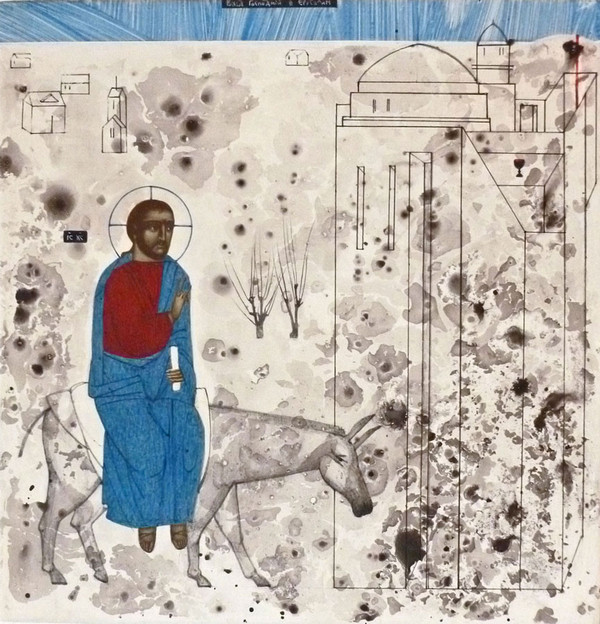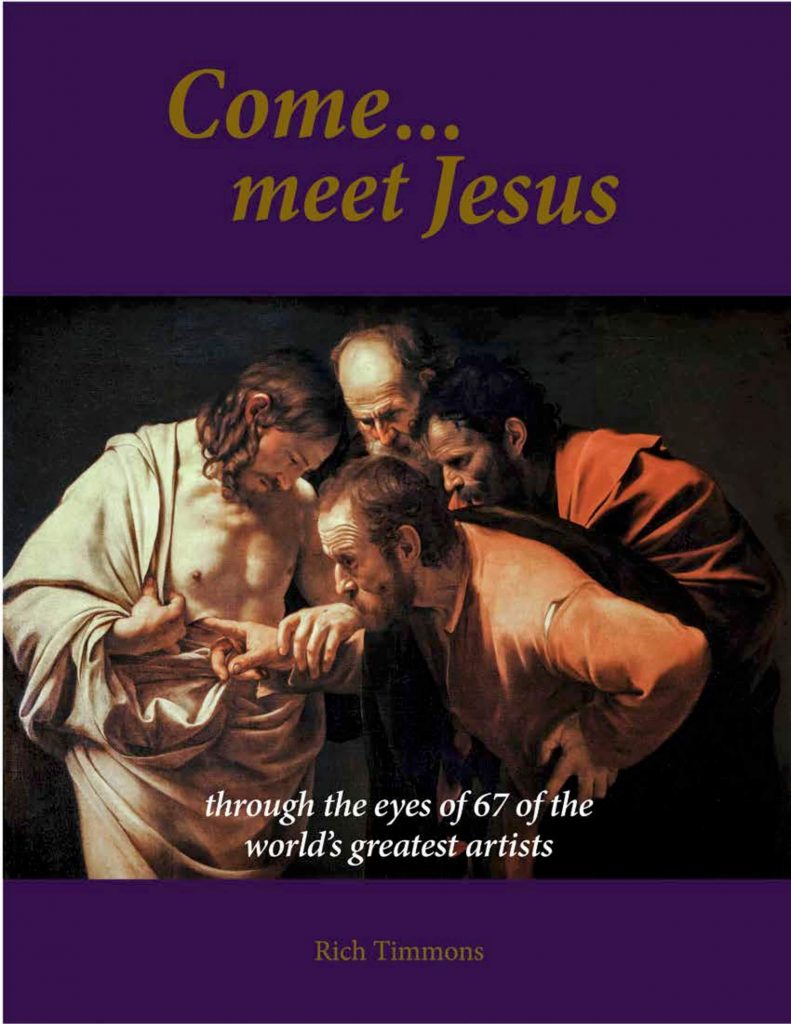All this was done that it might be fulfilled which was spoken through the prophet, saying, “Tell the daughter of Zion, behold, your King comes to you, humble, and riding on a donkey, on a colt, the foal of a donkey.” Matthew 21:4-5 referencing Zechariah 9:9
Ukrainian artist, Kateryna Kuziv, carries on the old Eastern Orthodox tradition of icon painting but blends it with her own characteristic abstraction. So, there is a lot of contrast, especially in this piece: old and new, flat space and volumetric form, specificity and ambiguity. But what creates unity throughout the diverse elements is the common thread of meditation. Each part of the painting feels like it was created slowly and mindfully. The light and shadow on the stylized face of Christ is perfectly smooth, and the hands and feet are just so. The perfect lines of the architecture are so carefully and intentionally drawn. And the lichen-like blooming blotches swirling across the image create gentle slow movement while highlighting and balancing the precision of the other elements.
In Kuziv’s own words, “The time when I create the icon is my way of praying, questioning, searching, the time of being with God, before God, the state of happiness and peace.” Rather than just creating an image that will be a vehicle for someone else to focus their worship, which icons are meant to be, she is worshipping through the process of creating it. It is not supposed to be a realistic depiction of a historical event, but a record of a meditation on spiritual truths.
And what is being meditated on here? The humble king, riding into His kingdom on a donkey. The paradox of God-who-became-man. Eternity choosing to live in this temporary world. Usually, spiritual things are visually represented as something transparent, like light; which makes sense, because we cannot see and touch spiritual things, they are not concrete and solid. But Kuziv flips that idea here and the concrete world, the city and the donkey, feels so insubstantial compared to the spiritual, the Messiah and the heavens above (both connected by the color blue, representing divinity). He is a more real reality than anything we can see or touch, and yet He made himself seeable and touchable for our sakes! What humility!


